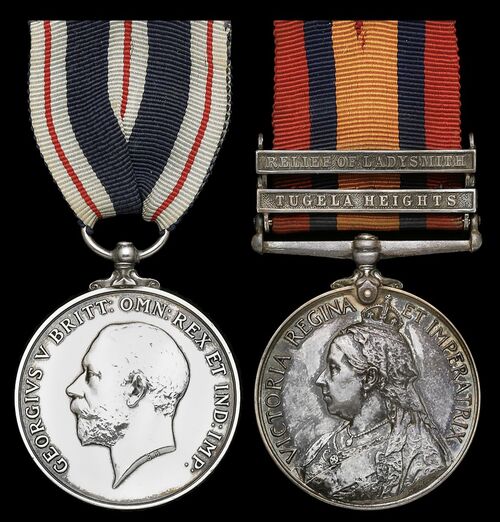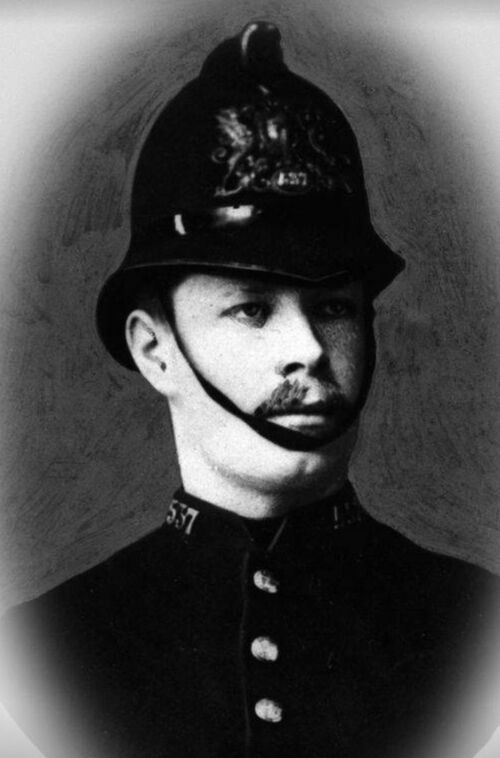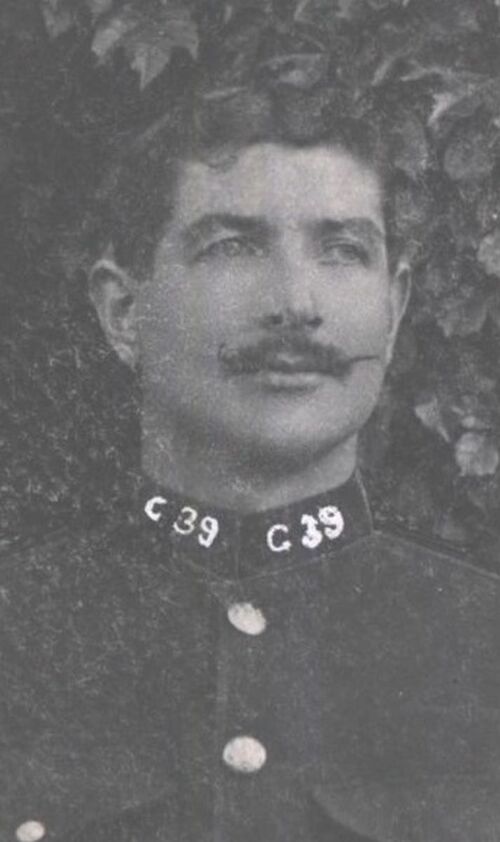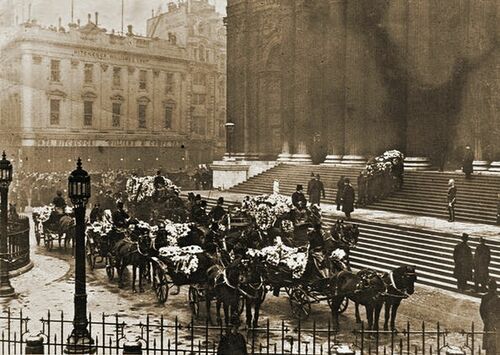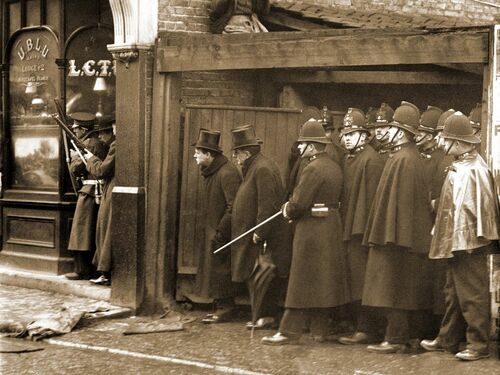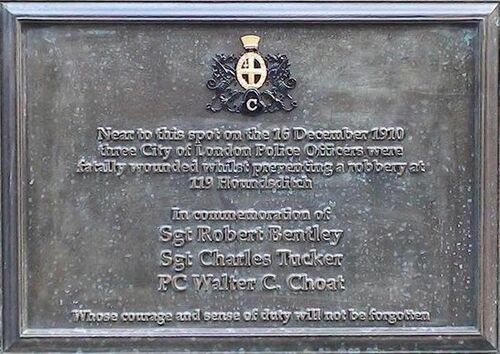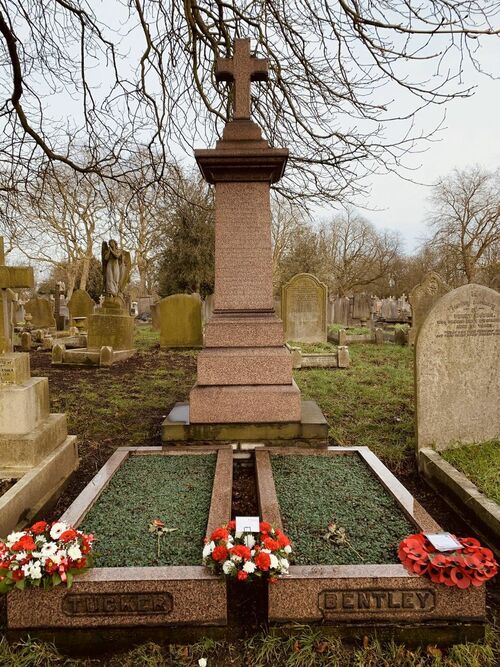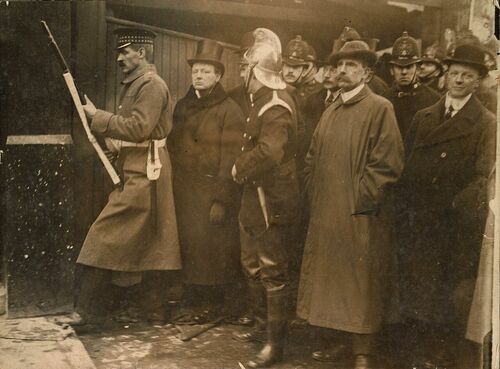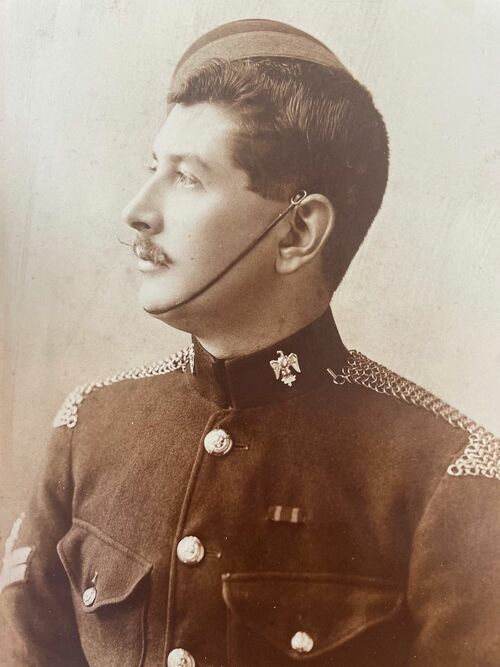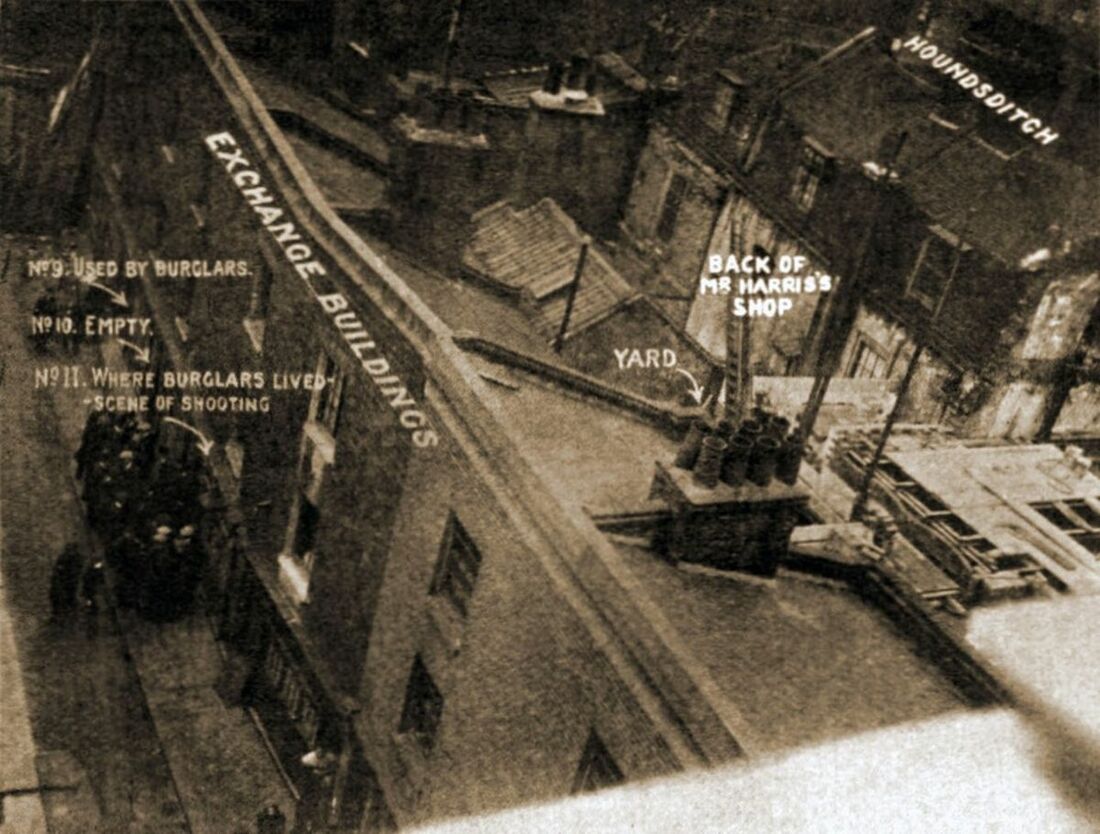Auction: 23003 - Orders, Decorations and Medals
Lot: 300
The important Posthumous K.P.M. for Gallantry awarded to Sergeant R. Bentley, City of London Police, late Private, 1st (Royal) Dragoons, who was in command of the Police unit which went to investigate the armed burglars in Houndsditch: he was the first through the door and was mortally wounded by gunfire - this tragedy thereafter resulted in the famous Sidney Street Siege
Poignantly, Bentley has been killed on his ninth wedding anniversary and was latterly buried with full honours in Ilford, with his ultimate sacrifice (and that of his comrades) being commemorated with a Public Service of Memorial at St Paul's Cathedral, the first such occasion that the grand venue had been used to honour the life of members in the ranks of the Police
King’s Police Medal, with gallantry riband, G.V.R., 1st issue (Robert Bentley, Sergeant.), in its case of issue; Queen's South Africa 1899-1902, 2 clasps, Tugela Heights, Relief of Ladysmith (3353. Pte. R. Bentley. 1/Rl. Drgns.), good very fine (2)
K.P.M. London Gazette 2 January 1911:
‘The King has been graciously pleased to award the King’s Police Medal to the following Officers of the City of London Police Force who took part in the attempted capture of armed burglars at Houndsditch on 16 December 1910.’
The above citation appeared for the awards of Sub-Inspector Bryant & Sergeant Woodhams. The further citation was offered for the posthumous awards of Bryant, Tucker & Choat:
'His Majesty has also graciously consented to the King's Police Medal being handed to the nearest relative of the following Officers who lost their lives on the occasion in question and
who would have received the decoration had they survived.'
Police Gallantry by J. Peter Farmery states:
‘As a result of information received from a member of the public who heard suspicious noises coming from the rear of H. W. Harris, the jewellers, in Houndsditch, London, late at night on 16th December 1910, police were called from the nearby station. A number of officers under the charge of Sergeant Bentley went into Exchange Buildings, at the rear of Houndsditch. Sergeant Bentley posted the others to keep watch, whilst he went to the door of No. 11, Exchange Buildings, where a man answered the knock, but did not speak English. The door was closed in the officer’s face. Sergeant Bentley opened the door and went inside. Suddenly several shots were heard, and Sergeant Bentley fell out of the door mortally wounded. Sergeant Bryant, who was standing close behind, was also struck in the chest and arm, and fell seriously wounded. As the other officers rushed up, an automatic pistol was fired from the doorway, and Sergeant Tucker was hit just above the heart. He died instantly. Constable Woodhams, who was on the opposite side of the street, was also struck by flying bullets in both legs, his left femur being shattered to such a degree that he was subsequently invalided out of the Force. Constable Choat, who had been posted to keep watch at the end of the street some thirty yards away, ran up on hearing the shooting, and grabbed one of the murderers, who was trying to make his escape. This man, named Gardstein, was the leader of the gang, and one of his compatriots, in trying to shoot Constable Choat, also shot Gardstein in the back. Constable Choat was shot eight times, and soon collapsed and died. Gardstein was later found in nearby Grove Street, having died from wounds. The search for the escaped murderers led to the infamous Sidney Street Siege, on 3 January 1911.’
Details of this famous event unsurprisingly survive in detail in the National Archives, accompanied by Winston Churchill’s covering letter to the King - Winston was then Home Secretary. The details of the award to Bryant:
‘Bryant also went to assist in the investigation of the noise and was a little distance behind Sergeant Bentley when the latter went to the door of No. 11 Exchange Buildings. On Bryant’s arrival at the door Bentley had stepped just inside and said “the man (whom Bryant had not seen) I have seen cannot speak English; he has gone to fetch somebody who can.” A few seconds elapsed when a man came from the back of the ground floor room and discharged a firearm four times. Bryant was struck in the chest and left arm, and fell heavily to the ground, and at the same time Bentley fell. Bryant says he scrambled to his feet, felt dazed, and his left arm was useless, and on recovering himself he saw Bentley, Choat and P.C. Woodhams lying on the ground, and their assailants had escaped. Bryant was removed to hospital and he is progressing satisfactorily.’
As the subsequent investigation proceeded, it transpired that the dead burglar, George Gardstein, was a hard line anarchist, known in St. Petersburg, Moscow, Warsaw, Vienna and Paris, but in the name of Oloski Morountzeff. It was his accomplices, Fritz Svaars and Josef “Yoshka” Solokoff, both of whom were present at the murder of Bentley, Choat and Tucker, who brought about the famous Sidney Street Siege, having made their way to that address after the shooting. They were probably accompanied by a third party, Peter Piakoff (a.k.a. “Peter the Painter”). And the rest, as they say, is history, the whole meeting a violent end, but not before exchanging further shots with the police and attracting the keen attention of Winston Churchill, the Home Secretary, whose top-hatted figure memorably appeared for the cameras at the height of the siege.
Robert Bentley was born at Poplar in January 1873 and was a clerk by trade when he enlisted in the Royal Dragoons on 7 May 1891, standing at 5 foot, 9 inches and tipping the scales at 126lbs. He served in the unit until May 1898, when he was transferred to the Army Reserve and joined the City of London Police. Recalled to the Colours in October 1899, he served with the unit in South Africa from 31 October 1899-8 June 1900 (Queen's Medal & 2 clasps). Returned home, he was married on 16 December 1901 and was advanced Corporal on 19 May 1903.
Discharged on 3 May 1903, Bentley returned to the ranks of the City of London Police and became one of the youngest Officers to make the rank of Police Sergeant. Little more need be said of the events which unfolded but a local Folkestone newspaper gives more detail:
'The shock of horror throughout the land by the murder of the three police officers in Houndsditch was accentuated in Folkestone when it was announced that Sergeant Bentley was one of the victims. The deceased was well known locally, particularly in Foord.
Sergeant Bentley was at one time in the 1st Dragoons, being with that Regiment when it was stationed at Shorncliffe seven or eight years ago. He formed one of the escort that attended the German Emperor (Hon. Colonel of the 1st Royals) on the occasion of His Majesty’s visit of inspection at Shorncliffe in 1902.
The Sergeant married Miss Louisa Goddard, the second daughter of Mrs (Charlotte) Goddard, of Foord road, at St John’s Church, on 16th December 1901.
On receipt of the telegram, on Saturday last, Mrs Goddard at once proceeded to her grief stricken daughter in London, and still remains there.
By tragic coincidence Sergt. Bentley was murdered on the anniversary of his wedding day. More pathetic still is the fact that his bereaved wife gave birth to a baby boy on Wednesday last. We are pleased to state that both mother and son are doing well.
Whenever he was granted a few days leave the late Sergeant would run down to visit his wife’s relatives in their little cottage at Foord, and many there are in this quarter who will miss a presence that was always welcome. It goes without saying that the heart of the whole town goes out in sympathy to Mrs Bentley in the cruel bereavement which has suddenly fallen upon her family.
Serg. Bentley with Serg. Tucker and Constable Choate was buried with highest honours at Ilford Cemetery on Thursday. First a service was held at St Paul’s Cathedral, this being the first time in history that that sacred edifice has been used for a public service of mourning for the loss of public servants holding merely the rank of the civil Police. A representative of the King occupied His Majesty’s stall in the choir, and many dignitaries were present.
Mrs Bentley and family wish to convey to all friends in Folkestone and district who sent flowers in memory of the late Sergeant Bentley heartfelt thanks. They feel it impossible to separately acknowledge the many tokens of respect, but trust the senders will accept this acknowledgement.'
Sold together with a portrait photograph of the recipient in Royal Dragoons uniform.
Subject to 20% VAT on Buyer’s Premium. For more information please view Terms and Conditions for Buyers.
Sold for
£6,000
Starting price
£6000

